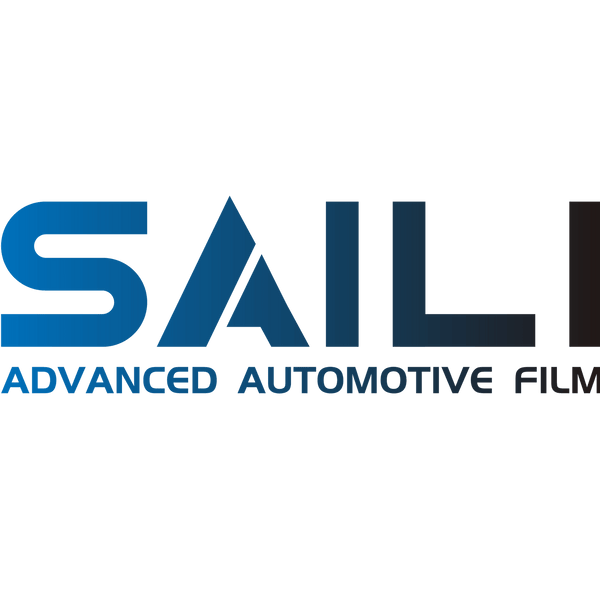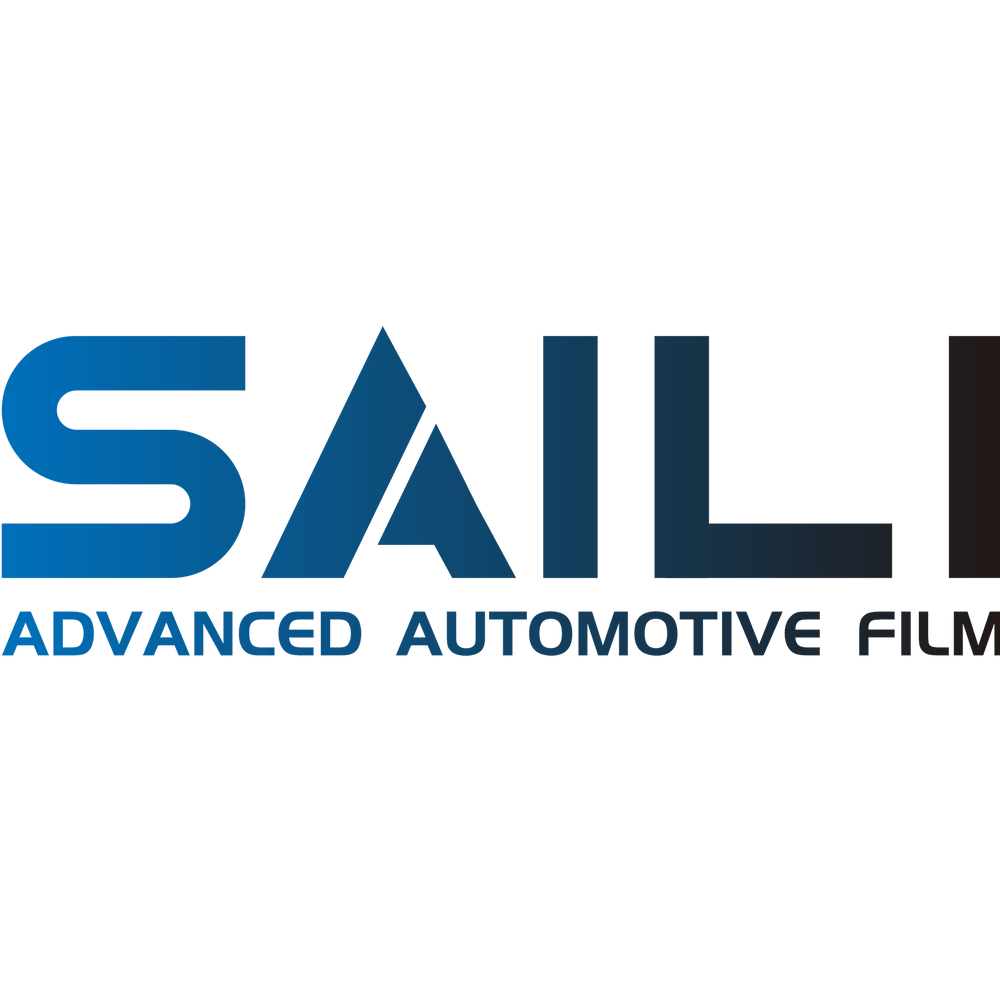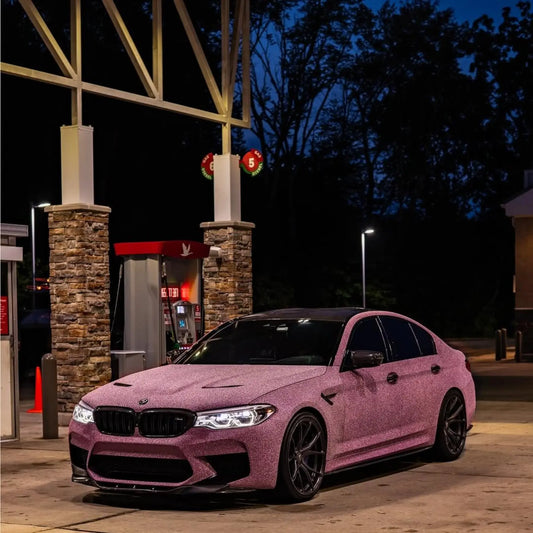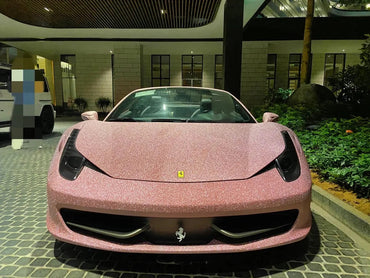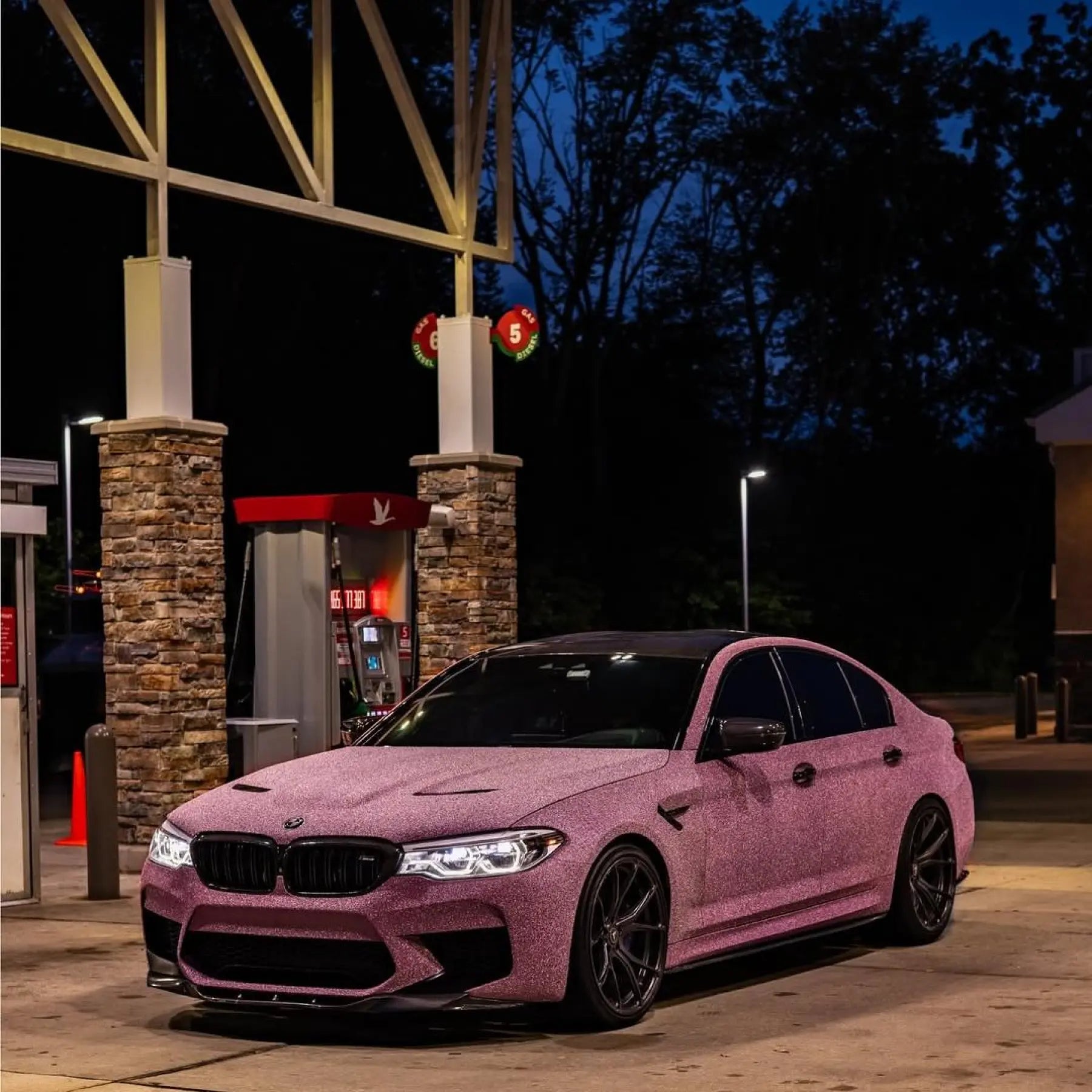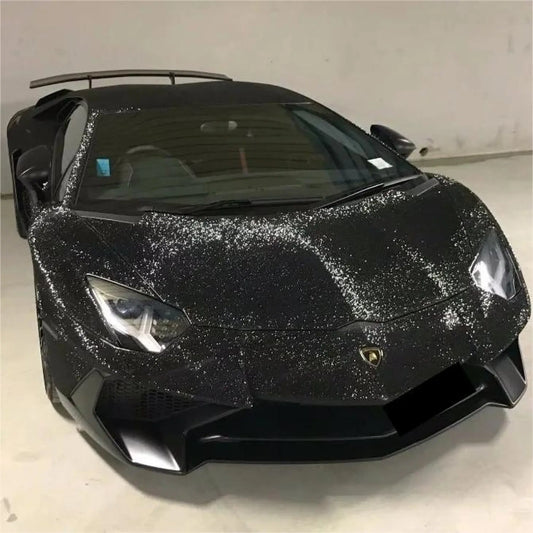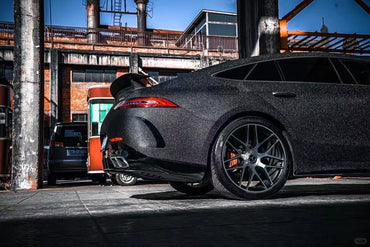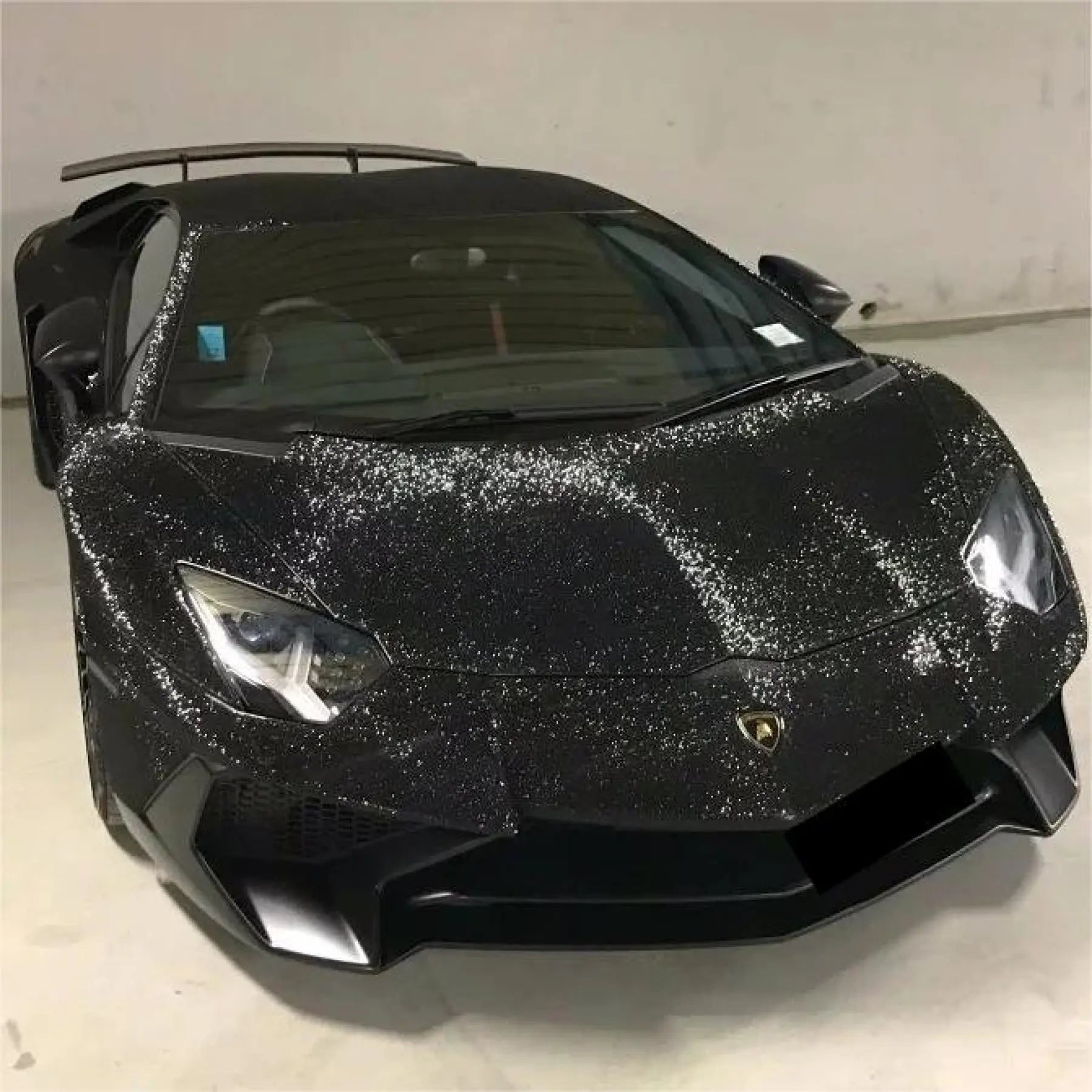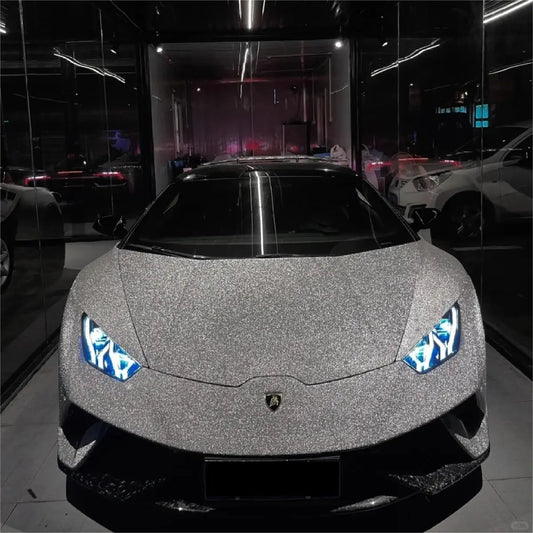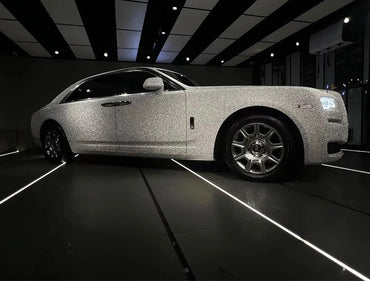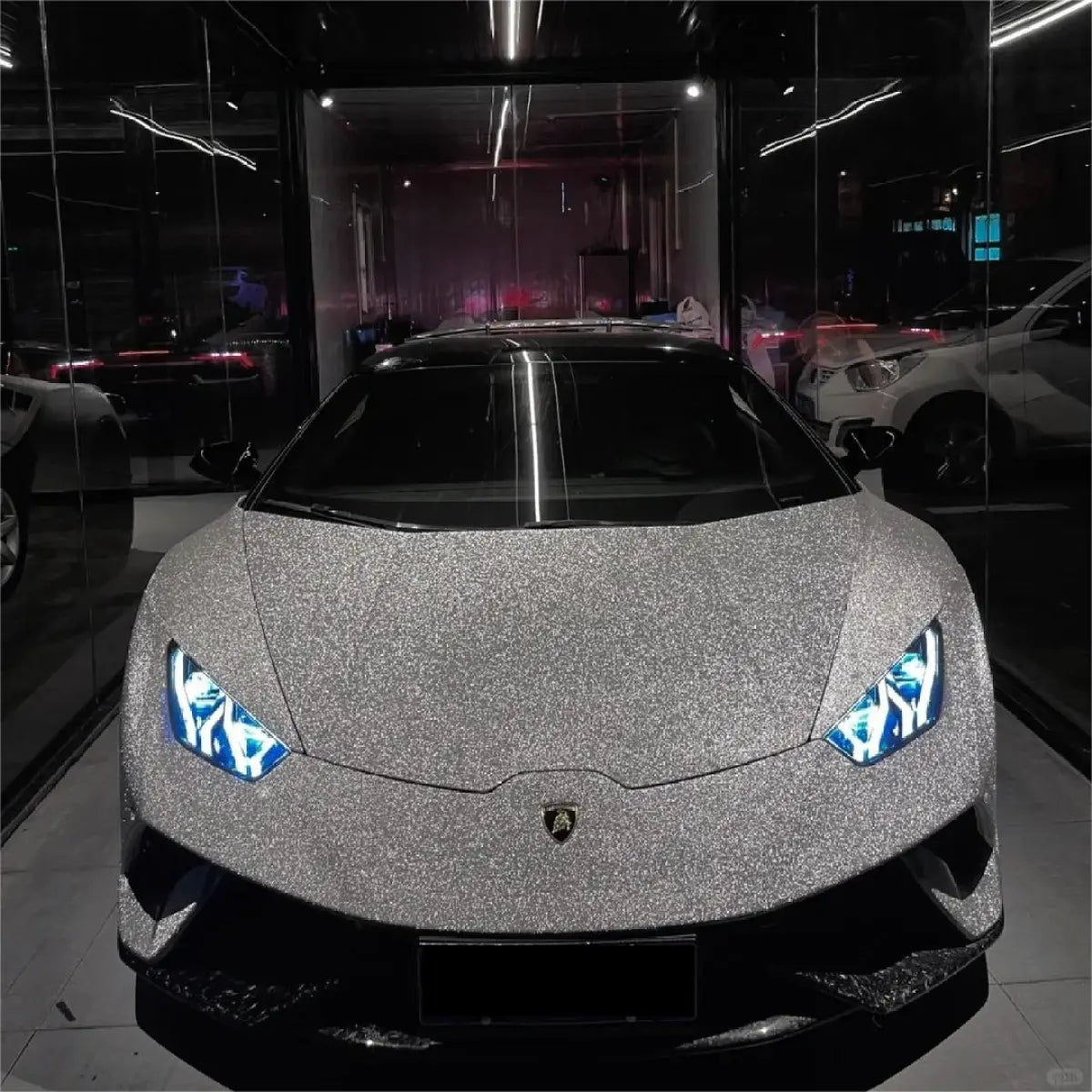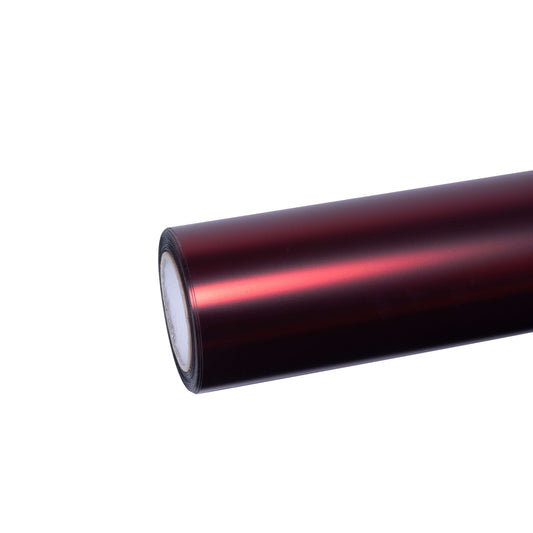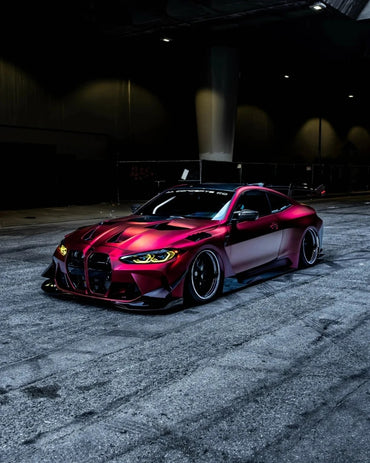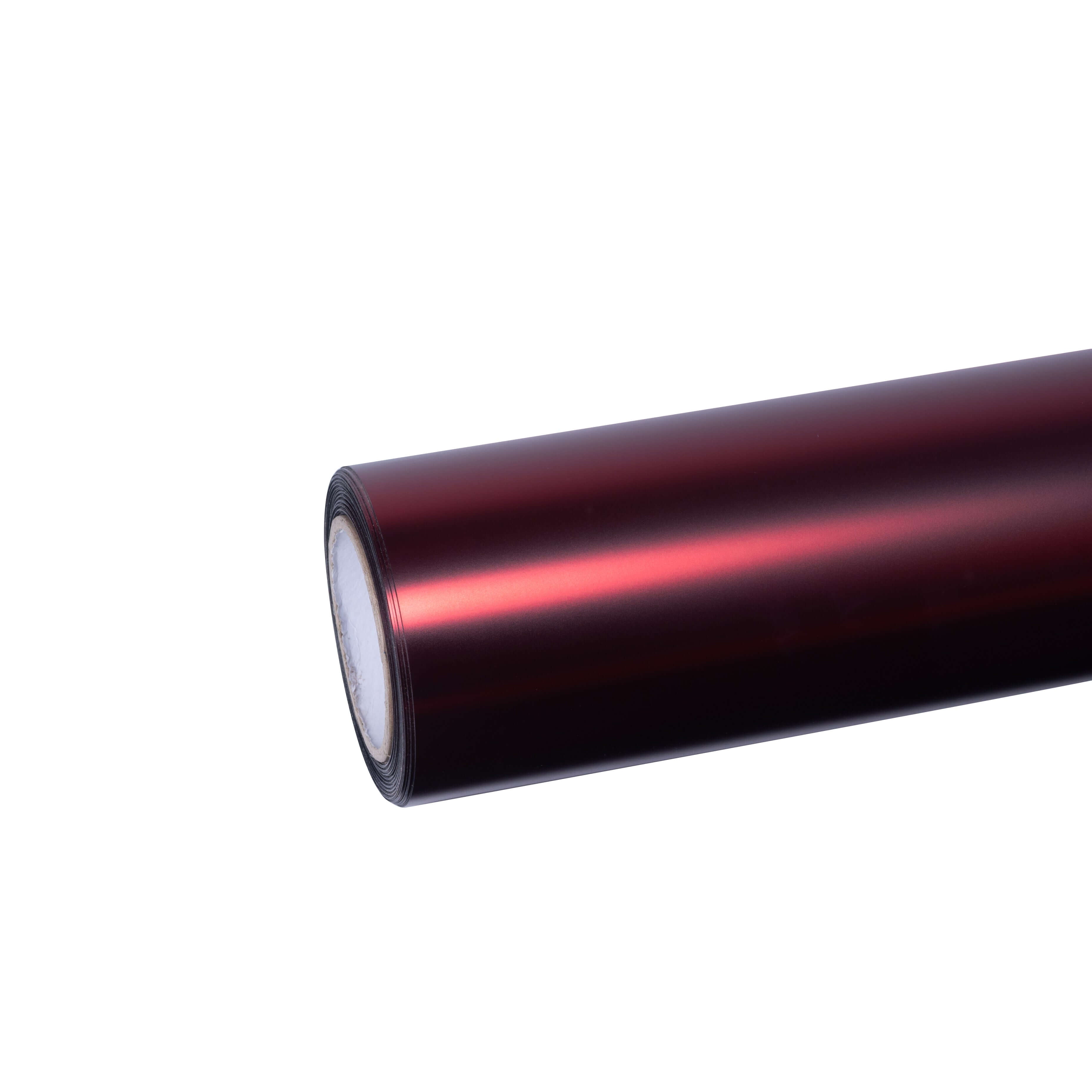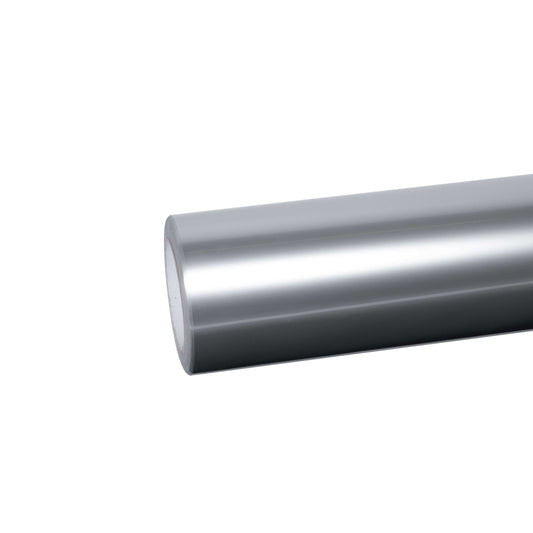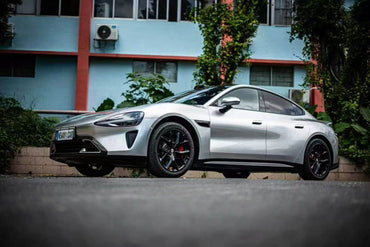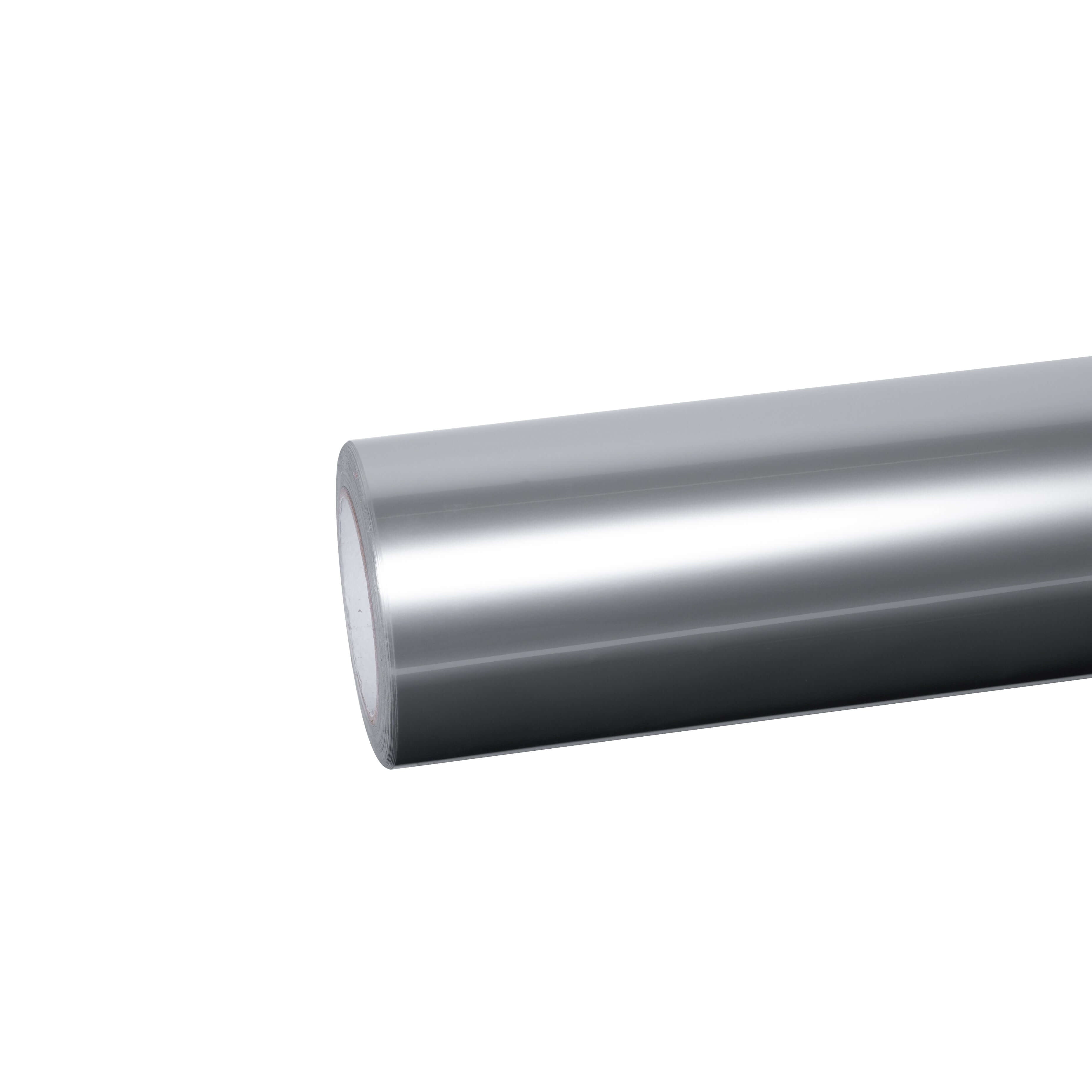Every vehicle owner faces this pivotal question: Should I wrap or paint my car? This decision impacts not only your vehicle's appearance but also your budget, maintenance routine, and resale value for years to come. As we navigate 2025, the automotive customization landscape has evolved dramatically, with vinyl wrapping emerging as a formidable alternative to traditional painting.
The global car wrap market has exploded to $10.04 billion in 2025, reflecting a fundamental shift in how car owners approach vehicle customization. This growth isn't coincidental—wraps offer compelling advantages that address modern needs for flexibility, cost-efficiency, and paint preservation.
Cost Comparison: Wrapping vs. Painting Your Car
Initial Investment Analysis
Cost is often the deciding factor when choosing between vinyl wraps and paint jobs. Let's break down the real numbers:
Vinyl Wrap Costs:
- Partial wrap (hood, roof, mirrors): $500 – $1,500
- Full vehicle wrap (standard): $2,500 – $5,000
- Premium finishes (liquid chrome, color-shifting): $3,500 – $6,000
- Paint protection film (PPF) full body: $5,000 – $8,000
Professional Paint Job Costs:
- Basic paint job: $3,000 – $5,000
- Standard quality paint: $5,000 – $8,000
- Premium custom paint: $8,000 – $15,000
- Show-quality finish: $15,000 – $20,000+
The verdict: Vinyl wrapping typically costs 40-60% less than comparable quality paint work, making it significantly more accessible for most vehicle owners.
Long-Term Cost Considerations
Beyond initial pricing, consider these ongoing expenses:
Vinyl Wrap Maintenance:
- Annual maintenance: $150 – $300
- Hand washing supplies: $50 – $100/year
- Potential ceramic coating: $500 – $1,000 (optional)
- Total 5-year cost: $3,250 – $6,500
Paint Job Maintenance:
- Annual detailing/waxing: $200 – $400
- Paint correction (every 2-3 years): $300 – $800
- Ceramic coating reapplication: $800 – $1,500
- Touch-up repairs: $150 – $500/year
- Total 10-year cost: $8,000 – $20,000+
According to automotive industry research, vinyl wraps deliver superior cost-efficiency, especially when factoring in the protection they provide to underlying paint, potentially eliminating expensive repair costs down the road.
Customization Options: Endless Possibilities vs. Traditional Limits
Vinyl Wrap Customization Advantages
One of the most compelling reasons to choose wrapping over painting is the virtually unlimited design flexibility. Modern vinyl technology enables customization options impossible to achieve with paint:
Finish Varieties:
- Ultra matte wraps: Sophisticated, non-reflective surfaces
- Metallic finishes: Shimmering particles for dynamic shine
- Gloss vinyl: Mirror-like wet-look finishes
- Satin/semi-gloss: Perfect balance between matte and gloss
- Liquid chrome: Reflective, mirror-finish surfaces
- Crystal effects: Sparkling, jewelry-like appearance
Specialty Options:
- 3D carbon fiber: Textured, racing-inspired patterns
- Color-shifting chameleon: Changes hue based on angle
- Rainbow laser effects: Holographic, iridescent finishes
- Glitter sparkle: Eye-catching shimmer effects
- Custom graphics and patterns: Unlimited digital printing possibilities
Color Selection:
Wraps offer access to hundreds of colors across every spectrum. Sailifilm provides extensive options including:
- Black wraps: From matte to gloss to satin
- White wraps: Pearl, crystal, and pure variants
- Grey wraps: Nardo, gunmetal, silver tones
- Blue wraps: From sky to navy to electric
- Red wraps: Cherry, blood, and candy shades
- Green wraps: Racing green, emerald, lime
- Purple wraps: Midnight, lavender, royal
- Pink wraps: Passion, baby, hot shades
- Yellow wraps: Gold, lemon, mustard
- Orange wraps: Tangerine, burnt, fluorescent
- Brown wraps: Bronze, chocolate, copper
- Silver wraps: Chrome, brushed, metallic
This level of variety enables true personalization that reflects individual style without compromise.
Paint Customization Limitations
Traditional automotive paint, while offering quality results, presents significant constraints:
- Limited finish options: Primarily gloss, with matte paint requiring specialized products
- Color mixing complexity: Custom colors increase costs dramatically
- Design restrictions: Multi-color schemes require extensive masking and multiple applications
- Texture limitations: Achieving specialty textures like carbon fiber is nearly impossible
- Modification difficulty: Changing designs requires complete repainting
Time investment: Complex paint designs can take weeks to complete, while vinyl wraps with intricate graphics can be installed in days.
Paint Protection: Preserving Your Investment
How Vinyl Wraps Protect Original Paint
Perhaps the most undervalued benefit of car wrapping is its exceptional protective capability. Vinyl acts as a sacrificial barrier between your vehicle's factory paint and environmental hazards:
Protection Against:
- UV radiation: Prevents paint fading and clear coat oxidation
- Rock chips: Absorbs impact from road debris
- Minor scratches: Surface-level damage affects only the wrap
- Chemical damage: Shields against bird droppings, tree sap, acid rain
- Road salt: Prevents corrosion in winter climates
- Bug splatter and tar: Easy to clean without paint damage
- Parking lot dings: Minor contact doesn't reach paint surface
Standard vinyl wraps (2-4 mil thickness) provide moderate protection suitable for daily drivers. For maximum defense, TPU paint protection wraps offer superior shielding.
Paint Protection Film: The Ultimate Shield
For owners prioritizing maximum protection, colored paint protection film combines aesthetic customization with industrial-grade defense:
PPF Advantages:
- Thickness: 6-10 mil (2-3x thicker than vinyl)
- Material: Thermoplastic urethane (TPU) vs. vinyl's PVC
- Self-healing properties: Minor scratches disappear with heat
- Impact resistance: Withstands rock chips that penetrate vinyl
- Longevity: 7-10 year lifespan vs. vinyl's 3-5 years
- Clarity: Nearly invisible when applied to maintain original color
- Warranty coverage: Many premium PPF products include 10-year guarantees
Modern colored PPF technology allows you to change your vehicle's color while adding premium protection—the best of both worlds. This innovation has revolutionized the wrapping vs. painting debate, offering a solution that exceeds both traditional options.
Traditional Paint Protection Limitations
While automotive paint includes clear coat protection, it's significantly less robust than vinyl or PPF:
- Direct exposure: No sacrificial layer means damage directly affects paint
- Clear coat vulnerability: Can be scratched, oxidized, and etched by contaminants
- Repair complexity: Touch-ups rarely match perfectly and are visible
- Cumulative damage: Years of micro-scratches create swirl marks and dullness
- Maintenance intensity: Requires regular waxing, sealing, and correction
Painted vehicles inevitably show wear over time, especially in high-impact areas like front bumpers, hoods, mirrors, and door edges.
Resale Value Considerations: Investment Protection
How Wraps Enhance Resale Value
The impact of vinyl wraps on resale value is largely positive when properly executed, contrary to common misconceptions:
Value Preservation Benefits:
- Original Paint Protection: The primary advantage—factory paint remains untouched and pristine beneath the wrap. When selling, remove the wrap to reveal showroom-condition paint, a massive selling point for discriminating buyers.
- Reversibility: Unlike permanent paint, wraps can be removed to return vehicles to stock appearance, broadening appeal to potential buyers who prefer original colors.
- Documented Maintenance: Professional wrap installation and maintenance records demonstrate owner care and attention, building buyer confidence.
- Modern Appeal: Vehicles with tasteful, contemporary wraps (matte finishes, subtle metallics) often command premium prices from buyers seeking modern aesthetics.
Research indicates vehicles with properly maintained wraps and pristine original paint beneath can fetch 5-15% higher resale values compared to similar vehicles with worn factory paint.
Strategic Wrap Choices for Resale
Not all wraps equally benefit resale value. Consider these guidelines:
Positive Impact Wraps:
- Neutral colors (black, white, grey)
- Subtle metallic finishes
- Premium ultra matte surfaces
- Factory-matching colors
- Full-coverage paint protection film
Potentially Limiting Wraps:
- Extreme custom graphics
- Neon or fluorescent colors
- Business advertising (unless sold to same industry)
- Heavily personalized designs
- Poor quality or damaged wraps
Pro tip: If planning to sell within 2-3 years, choose neutral, widely-appealing wrap colors. For long-term ownership, select based on personal preference.
Paint Job Resale Impact
High-quality paint jobs can enhance resale value, but several factors complicate this:
Positive Scenarios:
- Factory-color restoration on classic or luxury vehicles
- Upgrading from faded/damaged paint to pristine finish
- High-end custom work on collector vehicles
- Premium paint on luxury brands
Negative Scenarios:
- Non-factory colors reduce appeal (except rare colors)
- Poor quality paint work signals neglect
- Overspray or errors decrease value significantly
- Extreme custom colors limit buyer pool
- Repainted vehicles raise accident concerns
Many buyers specifically seek original factory paint, viewing repaints with suspicion even when quality is high. This gives wraps a distinct advantage—removability eliminates buyer concerns.
Durability and Lifespan: Long-Term Performance
Vinyl Wrap Longevity
Quality vinyl wraps deliver 3 to 7 years of excellent performance when properly maintained:
Lifespan Factors:
- Climate: Moderate climates extend life; extreme heat/cold accelerate aging
- UV exposure: Garage storage vs. outdoor parking dramatically affects longevity
- Maintenance quality: Regular cleaning and proper care add years
- Usage patterns: Daily highway driving vs. occasional use
- Film quality: Premium vinyl lasts longer than budget options
Expected timelines:
- Budget vinyl: 2-3 years
- Mid-grade vinyl: 3-5 years
- Premium vinyl: 5-7 years
- TPU paint protection film: 7-10 years
Vinyl wraps are ideal for those who enjoy updating their vehicle's appearance every few years, providing flexibility to adapt to changing tastes and trends.
Paint Job Durability
Professional paint jobs offer superior longevity: 10 to 15+ years with proper maintenance:
Longevity advantages:
- Permanent bond: Paint chemically bonds to surface
- UV resistance: Quality automotive paint includes UV inhibitors
- Clear coat protection: Additional defensive layer
- Refinishing options: Can be wet-sanded and buffed to restore shine
However, paint inevitably experiences:
- Fading: Especially red, black, and dark colors
- Oxidation: Clear coat breakdown over time
- Chips and scratches: Accumulate and require touch-ups
- Swirl marks: From improper washing techniques
- Environmental etching: From contaminants and acid rain
Even with excellent care, painted surfaces show age, while wrapped vehicles can be completely refreshed with new vinyl installation.
Installation Time: Getting Back on the Road
Vinyl Wrap Installation:
- Partial wrap: 1 day
- Full vehicle wrap: 2-4 days
- Complex designs: 3-5 days
Paint Job Timeline:
- Basic paint: 1-2 weeks
- Quality custom paint: 2-4 weeks
- Show-quality finish: 4-8 weeks
The dramatic time difference favors wrapping for those who can't be without their vehicle for extended periods. Additionally, vinyl installation doesn't require extensive vehicle disassembly like painting often does.
Maintenance Requirements: Care and Upkeep
Vinyl Wrap Maintenance
Wraps require minimal but specific maintenance to maximize lifespan:
Recommended Care:
Washing:
- Hand wash every 2 weeks with pH-neutral soap
- Use soft microfiber cloths or sponges
- Rinse thoroughly to remove all soap residue
- Dry with microfiber towels immediately
Avoid:
- Automated car washes with brushes
- High-pressure washers (over 1,000 PSI)
- Harsh chemicals or solvents
- Wax products (unless vinyl-specific)
- Prolonged water exposure on edges
Stain Removal:
- Address bird droppings, tree sap immediately
- Use isopropyl alcohol for stubborn residue
- Never scrub aggressively
Protection:
- Park in covered areas when possible
- Apply vinyl-safe ceramic coatings for added protection
- Inspect regularly for edge lifting
Annual maintenance costs: $150-300 for proper care products and occasional professional detailing.
Paint Maintenance
Traditional paint demands regular, ongoing attention:
Essential Maintenance:
Washing:
- Weekly washing to prevent contaminant bonding
- Two-bucket method to avoid swirl marks
- Quality automotive shampoo
- Clay bar treatment quarterly
Protection:
- Wax every 3 months (or synthetic sealant)
- Ceramic coating reapplication annually
- Paint correction every 2-3 years
Repair:
- Touch-up chips immediately to prevent rust
- Professional scratch removal as needed
- Clear coat refinishing for oxidation
Annual maintenance costs: $300-600+ for proper products, tools, and services.
While paint requires more intensive care, many enthusiasts enjoy the detailing process as part of vehicle ownership experience.
Environmental and Practical Considerations
Reversibility: The Game-Changing Advantage
Vinyl wraps' removability provides flexibility impossible with paint:
Scenarios where removability matters:
- Leased vehicles: Return in original condition without penalty
- Changing trends: Update appearance every few years
- Business evolution: Modify advertising as branding changes
- Resale preparation: Remove personalized wraps for broader appeal
- Mistake correction: Don't like the result? Change it relatively easily
Professional removal typically costs $500-800 and takes 1-2 days—far more economical than repainting if you want to change colors.
Paint's Permanence
Once applied, automotive paint becomes a permanent modification:
Implications:
- Color changes require complete repaint ($5,000-15,000)
- Mistakes are costly to correct
- Trend-chasing becomes prohibitively expensive
- Original color is lost permanently
- Lease agreements may be violated
For those committed to a long-term color choice, paint's permanence isn't a drawback. But for most drivers, flexibility is valuable.
Environmental Impact
Vinyl wraps are increasingly eco-friendly:
- Many modern vinyls are recyclable
- No VOCs (volatile organic compounds) during application
- Minimal waste compared to paint preparation
- Removal doesn't generate hazardous waste
Automotive paint has environmental concerns:
- Contains VOCs that contribute to air pollution
- Requires controlled disposal of chemicals
- Paint removal creates hazardous waste
- Spray booth operations consume significant energy
While both options have environmental footprints, wrapping generally presents fewer ecological concerns.
Special Use Cases: Which Option Wins?
Business and Fleet Vehicles
For commercial applications, vinyl wrapping dominates:
Advantages:
- Transform multiple vehicles consistently
- Easy updates as marketing evolves
- Remove wraps when selling used fleet vehicles
- Significantly lower cost for multiple vehicles
- Tax deductible as advertising expense
- Mobile billboard capability
Research shows wrapped fleet vehicles generate 30,000-70,000 daily impressions, providing exceptional marketing ROI compared to traditional advertising channels.
Luxury and Collector Vehicles
For high-value vehicles, the choice depends on goals:
Choose wraps/PPF when:
- Preserving original factory paint is paramount
- Vehicle has rare or special factory finish
- Protecting investment for future value
- Temporary color change desired
- Full paint protection film recommended
Choose paint when:
- Performing complete restoration
- Original paint is damaged beyond repair
- Creating show vehicle with custom finish
- Matching specific factory color no longer available
Many luxury car owners now invest in clear PPF over factory paint to maintain perfection, then add colored vinyl wraps over PPF for aesthetic changes—ultimate protection with maximum flexibility.
Daily Drivers and Personal Vehicles
For typical personal vehicles, wrapping offers superior value:
- Lower cost enables customization on any budget
- Protect against daily wear and tear
- Change colors as preferences evolve
- Maintain resale value through paint preservation
- Faster installation minimizes downtime
Paint makes sense when:
- Current paint is severely damaged
- Keeping vehicle 10+ years with same color
- Original paint has sentimental value
- Factory color restoration desired
Making the Decision: Wrap or Paint?
Choose Vinyl Wrapping If:
✅ Budget is $2,000-6,000 for full vehicle ✅ Want flexibility to change colors later ✅ Protecting original factory paint matters ✅ Need quick turnaround (days, not weeks) ✅ Desire trendy finishes (matte, chrome, color-shift) ✅ Planning to sell/trade vehicle within 5-7 years ✅ Have leased vehicle ✅ Want business advertising capabilities ✅ Prefer lower maintenance requirements ✅ Value environmental considerations
Choose Paint If:
✅ Budget allows $8,000-15,000+ investment ✅ Committed to color for 10+ years ✅ Current paint is beyond repair ✅ Prefer traditional automotive finish ✅ Vehicle is classic/collectible requiring restoration ✅ Enjoy detailed car care routines ✅ Don't mind extended shop time ✅ Want absolute maximum durability ✅ Original paint already compromised
The Hybrid Approach
Many savvy owners choose the best of both worlds:
- Apply TPU paint protection film to entire vehicle
- Install colored vinyl wrap over PPF
This combination provides:
- Maximum paint protection from PPF
- Aesthetic flexibility from vinyl
- Easy color changes without removing PPF
- Ultimate resale value preservation
While more expensive initially ($7,000-12,000), this approach optimizes every benefit of both technologies.
Getting Started: Next Steps
Exploring Your Options
Before committing, take these steps:
- Order samples: Request sample kits to examine colors and finishes in person
- Check popular options: Browse best-selling wraps to see trending choices
- Research installers: Find certified professionals with strong portfolios
- Get multiple quotes: Compare pricing from 3+ shops
- Review warranty coverage: Understand what's protected
Tools and Accessories
For DIY enthusiasts or those wanting to understand the process, having proper wrapping tools is essential:
- Precision cutting blades
- Squeegees (various firmness)
- Heat guns
- Spray bottles for tacking solution
- Microfiber applicators
Professional installation is strongly recommended for best results, but understanding the process helps you evaluate installer quality.
Conclusion: The Verdict on Wrapping vs. Painting
After examining every angle of the wrapping vs. painting debate, vinyl wraps emerge as the superior choice for most vehicle owners in 2025:
Why Wrapping Wins:
🏆 Cost-Effective: 40-60% less expensive than comparable paint 🏆 Protective: Shields factory paint from environmental damage
🏆 Flexible: Easily changeable as tastes and trends evolve 🏆 Fast: Days instead of weeks in the shop 🏆 Valuable: Preserves resale value through paint protection 🏆 Versatile: Unlimited colors, finishes, and design options 🏆 Reversible: Return to original at any time 🏆 Low-maintenance: Minimal upkeep required
Paint remains the best choice for permanent color changes on vehicles you'll keep 10+ years, complete restorations on classic cars, or when existing paint requires replacement. But for the vast majority of customization needs, vinyl wrapping provides superior value, protection, and flexibility.
The evolution of wrap technology—particularly colored paint protection film that combines aesthetics with industrial-grade protection—has fundamentally shifted the equation. Why commit to permanent paint when you can achieve equal or better results with reversible, protective vinyl?
Ready to transform your vehicle? Explore premium vinyl wrap options and discover how easily you can protect your investment while expressing your unique style. The future of automotive customization isn't paint—it's intelligent, flexible, protective vinyl technology.
Browse our complete collection of car vinyl wraps to find your perfect finish today.
